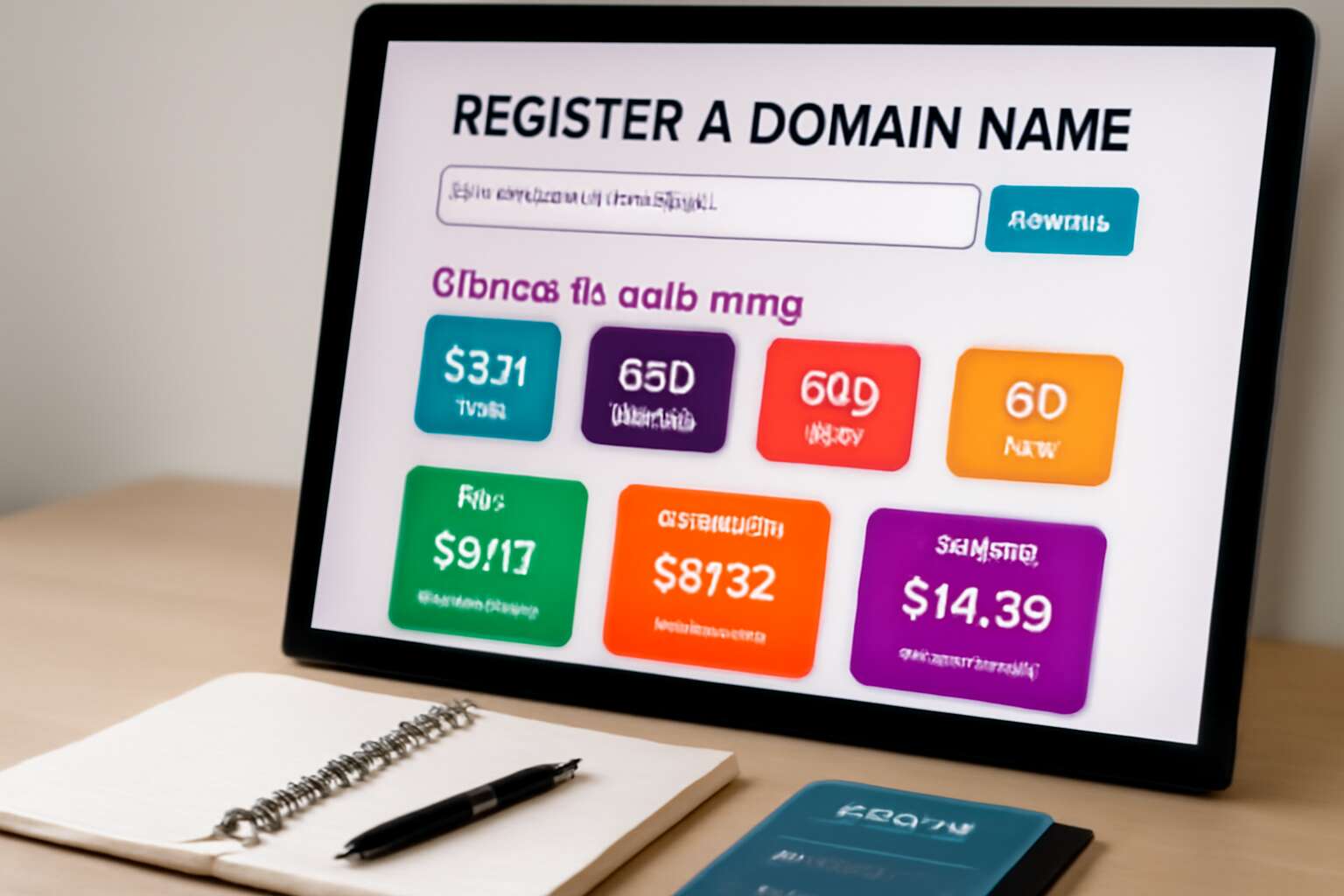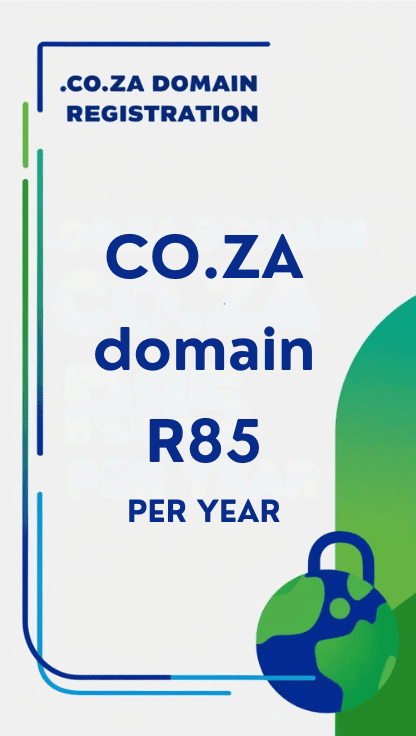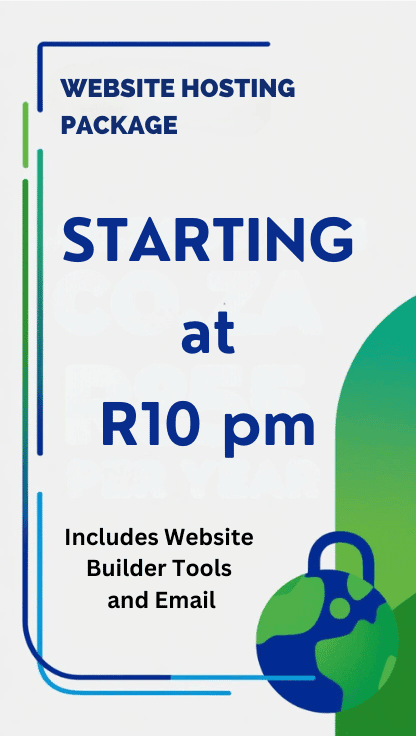Understanding Domain Registration Costs
1 - Factors Influencing Domain Pricing
Understanding the true cost of securing a digital identity involves more than a cursory glance at initial fees. In fact, the question of how much domain registration cost can fluctuate dramatically based on several nuanced factors. The allure of a memorable domain name can come with a hefty price tag, especially if it’s a coveted keyword-rich domain or a premium suffix. These elements elevate the overall expense, transforming what might seem like a straightforward investment into a strategic asset.
Several key influences dictate the pricing landscape for domain registration. Among these are the domain extension (.com, .net, .org), the registrar’s reputation, and the domain’s perceived value. Sometimes, the rarity of a specific domain name can drive prices sky-high, especially if it aligns with trending keywords or brand names. For a clearer picture, consider this list of factors that influence how much domain registration cost:
- The popularity of the domain extension
- Domain name exclusivity and relevance
- Registrar’s service fees and added features
- The presence of premium or reserved names
- Renewal costs that may differ from initial registration fees
In essence, the cost of securing a domain is a delicate dance between market demand and the intrinsic value of the name itself. It is an investment that, when carefully considered, can open doors to unparalleled digital prominence—an elegant step towards realising your online vision!
2 - Average Cost Range for Different Domain Types
When exploring the realm of digital real estate, understanding how much domain registration cost varies widely depending on the type of domain you seek. For standard domains like .com, .net, or .org, prices typically hover between £10 and £20 per year. These are the bread and butter of the internet—familiar, reliable, and widely recognised. However, premium domains, often associated with trending keywords, can command astronomical prices—sometimes reaching into the hundreds or thousands of pounds! Such high-stakes investments reflect the perceived value and exclusivity of the name.
On the other hand, niche-specific or less common domain extensions, such as .tech or .design, tend to be priced differently. They often start at around £20 and can escalate based on demand and rarity. To better illustrate the landscape, consider this list of typical costs for various domain types:
- Standard domains (.com, .net, .org): £10–£20 per year
- Premium or trending keywords: £100–£10,000+
- Niche or specialised extensions (.tech, .app): £20–£50 per year
Ultimately, how much domain registration cost depends on multiple factors, including the domain’s perceived value and its relevance within a competitive market. Recognising these nuances can help you make an informed investment in your digital identity, aligning cost with strategic importance.
3 - Premium Domains and Their Pricing
Premium domains are the divas of the digital world—exquisite, sought-after, and often commanding prices that make the average entrepreneur’s eyebrows shoot skyward. When pondering how much domain registration cost for these high-rollers, be prepared for a significant investment, often ranging from £1,000 to well beyond £10,000. These names aren’t just web addresses; they’re coveted digital real estate, often linked to trending keywords or irresistible brand names.
It’s worth noting that the allure of a premium domain lies in its perceived value and market scarcity. A catchy, memorable name can elevate your brand’s stature overnight—yet, such prestige comes with a hefty price tag. For those considering such an investment, understanding the factors that influence premium domain pricing is essential. These include the domain’s length, relevance, and current demand. In essence, the question “how much domain registration cost” for premium domains isn’t just about the initial outlay; it’s about the strategic value that name holds within your digital portfolio.
4 - Common Hidden Fees to Watch Out For
While the headline might lead you to believe that the true cost of a domain is simply the registration fee, the reality often involves a labyrinth of hidden charges that can surprise even seasoned entrepreneurs. These unforeseen expenses can significantly inflate the initial investment, making it crucial to understand what lurks beneath the surface of a seemingly straightforward transaction.
One of the most common hidden fees is renewal costs. Many registrars advertise a low first-year price but then impose steeper renewal rates. Additionally, services like privacy protection or domain forwarding often come as optional extras, subtly increasing your total expenditure. To navigate this maze, it helps to be aware of potential costs such as:
- Transfer fees when switching registrars
- Premium renewal charges for high-demand domains
- Additional costs for DNS management or SSL certificates
By staying vigilant, you can ensure that the real question—how much domain registration cost—remains predictable and manageable, rather than a surprise at checkout. It’s an intricate dance, balancing initial affordability with long-term investment, all wrapped within the enchanting world of digital real estate.
Standard Domain Registration Fees
1 - Typical Costs for Popular TLDs (.com, .net, .org)
Understanding how much domain registration cost varies dramatically depending on the top-level domain (TLD) you choose. For the most popular options like .com, .net, and .org, typical costs are surprisingly stable—ranging from £8 to £15 per year. While these rates seem straightforward, the real intrigue lies in the subtle nuances of pricing structures that can disguise hidden fees or renewal costs.
For instance, .com domains tend to be the most sought-after, often commanding a slightly higher registration fee due to their prestige and recognition. Conversely, .net and .org domains usually hover around the same price point but may have different renewal terms or promotional discounts. These costs are influenced by factors such as registrar policies and ongoing promotional offers, making it essential to scrutinise the fine print when considering how much domain registration cost truly entails.
In certain cases, registrars offer bundled packages or discounts for multi-year registrations, which can alter the apparent price. Here’s a quick overview of typical costs:
- .com domains: £8–£15 annually
- .net domains: £10–£15 annually
- .org domains: £8–£12 annually
While these numbers provide a general landscape, the real story behind how much domain registration cost can be more complex, filled with unpredictable twists and hidden charges lurking beneath the surface.
2 - Country Code TLDs (ccTLDs) Price Variations
The world of domain registration is a landscape riddled with surprises, especially when navigating the realm of country code TLDs (ccTLDs). These domains — like .uk, .ca, or .au — often come with a price tag that varies dramatically depending on the registry and country-specific policies. Surprisingly, the cost of registering a ccTLD can range from as little as £5 to over £50 annually, making it a game of chance and choice.
Unlike popular TLDs, which tend to have more predictable prices, ccTLDs are subject to regional regulations and local market conditions. For example, some country-specific domains like .uk or .ca offer straightforward registration fees, but others, such as .cn or .ru, might include additional surcharges or renewal fees. The variation often hinges on factors such as local demand, government policies, or exclusivity restrictions.
To better grasp the scope, consider these key points:
- The registration cost for country-specific domains can fluctuate widely, sometimes influenced by political or economic shifts.
- Renewal fees may differ significantly from initial registration costs, impacting long-term budgeting.
- Some ccTLDs impose restrictions on who can register, which can influence pricing structures — for instance, requiring local presence or proof of residency.
For those pondering how much domain registration cost truly entails when it comes to ccTLDs, the answer is often a mix of localisation, policy, and market demand. Each country’s registry acts as a gatekeeper, shaping the true price of your digital frontier with subtle nuances and hidden costs lurking beneath the surface.
3 - Registration Periods and Pricing (1-year vs. Multi-year)
When it comes to understanding how much domain registration cost, the registration period plays a surprisingly pivotal role. Most registrars offer both one-year and multi-year options, but the question remains—what’s the real difference?
A standard one-year registration fee provides flexibility, allowing you to test the waters without committing long-term. However, opting for a multi-year registration often grants a slight discount, saving you money in the long run. Some providers even throw in perks like free privacy protection or domain locking for longer periods—kind of like a loyalty bonus in the wild world of domain ownership.
- One-year registration: Short-term, flexible, but typically more expensive annually.
- Multi-year registration: Cost-effective, with potential discounts and added perks.
The choice ultimately hinges on your budget and confidence in your domain’s future. While the initial outlay might seem modest, understanding how much domain registration cost varies depending on registration periods can help you avoid sticker shock later.
4 - Discounts, Promotions, and Bulk Registration Deals
In the intricate dance of digital presence, the question of how much domain registration cost remains a pivotal consideration for every visionary entrepreneur and seasoned webmaster alike. Amid the myriad factors that influence pricing, standard domain registration fees often surprise with their subtle variations—shaped by discounts, promotions, and bulk registration deals that can transform a modest expense into a strategic investment.
Many registrars entice customers with seasonal sales or exclusive offers, turning an ordinary purchase into a rare opportunity. For those who dare to buy in volume, bulk registration deals unlock savings that amplify as your domain portfolio expands. These incentives—crafted to foster loyalty—often include enticing perks such as free privacy protection or domain locking, making the cost of registering multiple domains feel less like a toll and more like a gateway to digital sovereignty.
- Special promotional discounts often slash the initial registration fee, creating a window of affordability.
- Multi-year deals not only secure your domain for longer but also tend to come with reduced annual costs.
- Bulk registration strategies can leverage economies of scale, significantly lowering overall expenditure.
Within this landscape of possibilities, understanding the nuances of how much domain registration cost can vary is essential. It’s a symphony of factors, each influencing the final tally—yet, with keen insight, you can navigate this terrain to optimise your investment and elevate your online presence to soaring heights.
Additional Costs and Charges
1 - Renewal Fees and Price Fluctuations
While the initial cost of registering a domain might seem straightforward, the true expense often lies in the additional costs and charges that follow. Renewal fees, in particular, can surprise many, especially if they fluctuate based on market conditions or domain popularity. It’s a common misconception that once you pay the registration fee, your expenses are settled. In reality, the ongoing costs can sometimes rival the initial investment, making it essential to understand how much domain registration cost over time.

Price fluctuations are a key factor to consider. Some registrars offer promotional rates that increase significantly upon renewal. For instance, a domain purchased at a bargain price might double or even triple in renewal costs after the first year. This unpredictability underscores the importance of scrutinising renewal terms before committing. Being aware of these potential increases can save you from unexpected financial strain, especially if you’re managing a budget for your online presence.
To navigate these waters, many experts recommend creating a clear financial plan that accounts for renewal fees and possible price hikes. Since renewal costs can vary widely depending on the domain extension and registrar policies, it’s wise to compare renewal rates across providers. Remember, what seems affordable today might not hold true in the future. As the saying goes, “The devil is in the details,” and in domain registration, understanding how much domain registration cost entails more than just the initial payment.
2 - Privacy Protection and WHOIS Guard Costs
Beyond the initial registration fee, domain ownership often entails additional costs that can quietly erode your budget if not carefully scrutinised. Privacy protection services, such as WHOIS guard, are increasingly becoming a necessity rather than a luxury, safeguarding your personal information from unwelcome solicitations or cyber threats. The cost of these services varies significantly among registrars but typically ranges from £5 to £15 annually. This seemingly modest expense can, over time, accumulate into a substantial outlay, especially if you manage multiple domains.
Many registrars offer privacy protection as an add-on, yet it’s vital to weigh the value against the expense. For example, some providers bundle privacy services into their registration packages, while others charge separately, adding a layer of complexity to understanding how much domain registration cost truly is. Given the potential for these charges to fluctuate or be subject to renewal, it’s wise to factor in privacy costs when budgeting for your digital footprint.
In essence, the real cost of maintaining a domain extends well beyond the initial purchase. These ancillary charges—particularly privacy protection—are integral to a comprehensive understanding of how much domain registration cost over the lifespan of your online presence. Staying vigilant and informed about these optional yet often essential expenses ensures your investment remains predictable and manageable in an ever-changing digital landscape.
3 - Transfer Fees and Domain Parking Charges
As the digital realm expands, so too do the intricacies of maintaining a domain. Beyond the initial fee, additional costs such as transfer fees and domain parking charges can stealthily inflate your overall expenditure. Transfer fees, for instance, are often a one-time expense that varies depending on the registrar, typically ranging from £10 to £50. These charges become relevant if you decide to shift your domain to a different provider, often requiring careful planning and budget consideration.
Domain parking, a strategy utilised to monetise or safeguard a domain, may also introduce hidden costs. Some registrars charge a monthly fee for parking services or offer them as part of a package. Interestingly, certain providers include parking as a complimentary feature, but beware—the choice can influence how much domain registration truly costs over time. For those managing multiple domains, these charges can accumulate, subtly impacting your digital budget.
- Transfer fees
- Parking charges
Understanding these ancillary costs is crucial in answering the question of how much domain registration cost. They are often overlooked during initial registration but can significantly affect long-term financial planning—especially if your domain strategy involves frequent transfers or parking for monetisation. As with any investment in the digital landscape, foresight and vigilance can help mitigate unexpected expenses and preserve your online empire’s stability.
4 - Aftermarket and Premium Domain Acquisition Costs
Beyond the initial investment, the shadows of the digital world often hide costs that can drain your resources over time. One such spectre is the expense associated with acquiring aftermarket or premium domains. These domains, often rare or highly coveted, can command prices that soar into the hundreds or even thousands of pounds. The question of how much domain registration cost extends far beyond the simple registration fee; it encompasses these enigmatic premiums that can transform a modest budget into a substantial expenditure.
For those venturing into the realm of premium domain acquisition, understanding the hidden financial intricacies can be vital. Some domains are sold through auctions or private sales, where the price is dictated by scarcity and demand. In this shadowy marketplace, prices are often opaque, but one thing remains clear: the investment in a premium domain can be as fleeting as a ghost’s whisper or as enduring as a tombstone.
- Market value of the domain
- Reputation and memorability of the name
- Historical significance or branding potential
When pondering how much domain registration cost, it’s essential to consider these additional costs, which can sometimes dwarf the standard registration fee. Whether you seek a hauntingly perfect domain or a hidden gem in the digital ether, the true expense lies in the pursuit, a pursuit that can lead to both riches and ruin in the murky depths of cyberspace.
Cost Comparison Across Domain Registration Providers
1 - Top Domain Registrars and Their Pricing Structures
In the shadowed corridors of digital commerce, the question echoes with haunting clarity: how much domain registration cost? Top domain registrars, those gatekeepers of the virtual realm, cloak their pricing structures in an intricate tapestry of fees and discounts. Some offer alluring introductory rates, only to reveal a different figure upon renewal, while others impose hidden charges for privacy protection or transfer services.
The most reputable registrars often employ a tiered pricing model, where the initial registration fee is modest, yet renewal costs can vary significantly. For example, a standard .com domain might start at around £8 to £12 per year, but premium domains or certain country code TLDs could demand a steeper toll—sometimes reaching hundreds of pounds.
To navigate this labyrinth, consider this ordered list of the typical costs across leading providers:
- Initial registration fees for popular TLDs like .com or .net, generally between £8 and £15 annually.
- Renewal costs, which may increase after the first year, often from £10 to £20 depending on the registrar.
- Additional charges for privacy or WHOIS guard, adding approximately £5 to £10 per year.
Such variations underscore the importance of scrutinising each provider’s pricing structure—what seems affordable now may become prohibitively expensive as renewal dates approach. In this shadowy world, knowing how much domain registration cost is not merely curiosity but a vital shield against unforeseen expenses.
2 - Pricing Transparency and Customer Support
When evaluating how much domain registration cost, transparency becomes a crucial factor. Many providers advertise low initial fees but hide additional charges that can inflate the total expense over time. It’s surprising how often customers overlook the fine print, only to face unexpected renewal costs or extra fees for privacy protection. Genuine transparency from registrars—where all charges are clear and upfront—can significantly impact your budget and peace of mind.
Customer support also plays a vital role in understanding the true cost of domain registration. Reliable providers offer detailed breakdowns of fees, timely assistance with renewals, and transparent policies on transfer or parking charges. For example, some registrars include privacy protection in their package, while others charge separately, adding around £5 to £10 annually. This discrepancy highlights the importance of comparing these details across providers before committing, especially when trying to answer the common question: how much domain registration cost really is?
3 - Evaluating Additional Services Included in Fees
When navigating the labyrinth of domain registration, the true cost often remains obscured beneath layers of marketing gloss and promotional allure. The question of how much domain registration cost hinges not solely on the initial fee, but on a meticulous comparison of additional services included within each provider’s pricing structure. It’s easy to be lured by low headline prices, yet these often mask supplementary charges for essential features such as privacy protection, domain forwarding, or parking services.
To truly grasp the financial landscape, examining the comprehensive offerings of different registrars becomes paramount. Some may bundle privacy protection at no extra charge, while others charge an additional £5 to £10 annually—an important consideration when calculating total expenditure.
- Privacy and WHOIS Guard
- Domain transfer fees
- Renewal costs for premium services
These elements can significantly influence the overall investment, sometimes tipping the scales from an affordable expense into a more substantial commitment. Evaluating these supplementary services reveals the nuanced reality behind the seemingly straightforward question of how much domain registration cost actually is, revealing that the true price often lies in the details that many overlook in their haste to secure their digital address.
4 - User Reviews and Reputation Impact on Cost
When it comes to assessing the true cost of domain registration, the reputation of a registrar can dramatically influence the final figure. User reviews and community feedback serve as vital barometers, revealing whether a provider’s initial low-cost offer is marred by hidden fees or subpar customer support. A company praised for transparency often commands slightly higher prices, but the peace of mind it offers can be invaluable. Conversely, a deal that seems too good to be true may come with a shadow of doubt—raising questions about how much domain registration cost in the long run.

Reputation plays a pivotal role in shaping perceptions of value. Registered users frequently highlight experiences that range from smooth, straightforward registration processes to frustrating encounters with surprise charges. This collective voice can help prospective clients navigate the labyrinth of pricing structures, where some providers might include essential services like domain transfer or renewal at no extra cost, while others charge premium fees. Such insights are crucial when evaluating the true cost of domain registration, ensuring that additional expenses are factored into the overall investment.
In the end, a reputable registrar’s offering often balances competitive pricing with comprehensive customer support and clear, upfront disclosures. As the saying goes, “You get what you pay for,” but in the realm of domain registration, understanding the nuances behind user reviews illuminates what lies beneath the surface—making the difference between a fleeting bargain and a sound, long-term choice.
Maximizing Value and Cost-Effective Domain Registration
1 - Choosing the Right Domain Extension for Your Budget
Choosing the right domain extension for your budget can dramatically enhance the perceived value of your online presence without draining your resources. While the classic .com remains the gold standard, alternative extensions like .co, .io, or niche-specific TLDs often offer more affordable options, allowing you to maximise your investment. This strategic choice can lead to significant savings, especially when considering how much domain registration cost varies across different extensions.
Opting for a less common TLD can also sometimes unlock promotional prices or discounted renewal rates. The key is to balance brand relevance with affordability, ensuring your domain not only captures your vision but also aligns with your financial plan. Remember, selecting an extension that resonates with your target audience while fitting within your budget can make all the difference in creating a compelling digital identity.
2 - Long-term Registration Strategies
Maximising value in the realm of domain registration is akin to finding the perfect bargain in a luxury store—rare, but not impossible. A savvy approach involves selecting registration periods that offer the best bang for your buck. Opting for multi-year registrations can often unlock discounts, transforming what might seem like a hefty upfront cost into a more manageable expense over time. After all, locking in your domain for several years not only secures your digital real estate but also shields you from sudden renewal fee hikes.
Some registrars sweeten the deal with promotional prices or bundled services like privacy protection—costs that can significantly impact how much domain registration cost overall. Moreover, exploring alternative registration options, such as bulk purchases or lesser-known TLDs, often results in a more cost-effective strategy. The key is to balance your long-term ambitions with short-term savings, ensuring your online identity is both affordable and resilient.
3 - Utilizing Coupons and Special Offers
In the realm of digital dominion, savvy domain owners often discover that unlocking the true value of their investments hinges on more than just initial costs. Harnessing the power of coupons and special offers can dramatically reduce how much domain registration cost, transforming a seemingly steep expense into a manageable investment. Many registrars periodically unveil promotional codes, exclusive discounts, or limited-time deals that can slash prices substantially.
To maximise savings, it’s wise to keep a keen eye on registrar websites and industry newsletters that frequently feature these offers. Furthermore, some providers bundle services like privacy protection or domain parking at reduced rates during promotional periods. For those willing to be strategic, an ordered list of steps might include:
- Sign up for registrar newsletters to receive early alerts about discounts.
- Compare promotional codes across multiple registrars to find the most favourable deal.
- Capitalize on seasonal sales or anniversary discounts that often appear during key periods of the year.
By weaving these tactics into your domain acquisition journey, you can significantly influence how much domain registration cost, ensuring your digital empire remains both formidable and financially prudent.
4 - Importance of Renewal Planning to Avoid Extra Costs
Understanding the true cost of owning a domain extends beyond the initial registration fee. One of the most overlooked aspects is renewal planning, which can significantly influence how much domain registration cost over time. Neglecting to budget for renewal fees may lead to unexpected expenses, especially if prices fluctuate or if additional services are added later.
To avoid these pitfalls, it’s wise to establish a long-term registration strategy. This might involve selecting a registrar that offers transparent renewal pricing or locking in multi-year deals at favourable rates. Incorporating renewal considerations into your broader budgeting ensures that your digital presence remains steady without draining resources unexpectedly.
Monitoring renewal costs is crucial—some providers charge extra for privacy protection or domain parking, which can inflate the overall expense. By understanding these variables, you can make informed decisions about how much domain registration cost fits within your financial plan, safeguarding your online assets from costly surprises down the line.



